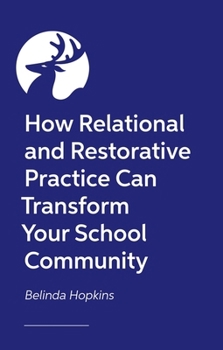How Relational and Restorative Practice Can Transform Your School Community
Relational and Restorative practice gives everyone in a school community - staff, students and their parents or carers, and other stake holders such as trustees - an equal voice, whatever their ethnicity, gender, socio-economic status, religion, ability status or sexual orientation . In this regard it is an effective way of creating a more socially just, inclusive learning environment.
Use Belinda Hopkins's simple 5:5:5 model, offering you a framework for thinking about how to create a consistent, coherent system that can support everyone in the school community and help your school to become more socially just. Find out what relational and restorative practice can do to help you understand and address the why behind children's behaviours and what can be done to create learning environments that meet the needs of all children. Critically, this book also offers evidence-based guidance on how to adapt principles and processes to suit the needs of individual children taking into consideration trauma-informed approaches, adverse childhood experiences, cultural, socio-economic and developmental factors.Format:Paperback
Language:English
ISBN:1839974915
ISBN13:9781839974915
Release Date:September 2026
Publisher:Jessica Kingsley Publishers
Length:304 Pages
Customer Reviews
0 rating





